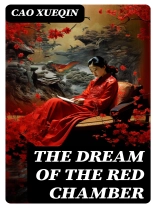The Dream of the Red Chamber, an exquisite masterpiece by Cao Xueqin, delves deep into the lives of the Jia family, weaving a rich tapestry of love, ambition, and the inevitable decay of aristocracy in 18th-century China. The novel is notable for its intricate character development and vivid prose, employing an allegorical literary style that reflects the complexities of human emotions and societal dynamics. Framed within the context of a declining feudal system, the narrative simultaneously serves as a critique of Confucian values and explores themes of fate, illusion, and the transient nature of life, rendering it a cornerstone of Chinese literature. Cao Xueqin, a descendant of a once-wealthy family, experienced the profound loss of status and wealth, which catalyzed his writing. Born into a life of privilege that shrank into poverty, his personal experiences of familial disintegration and the fleeting nature of happiness manifest vividly throughout the novel. His rich cultural background and keen observations of the society around him provide a poignant authenticity to the lives of his characters, making their struggles both universal and timeless. The Dream of the Red Chamber is not just a novel; it is an invitation to explore the intricacies of human relationships and societal norms. Readers seeking to immerse themselves in a world of beauty, tragedy, and introspection will find this work both enlightening and profoundly moving. It stands as a testament to the human condition, making it essential reading for anyone interested in literary depth and historical significance.
Sobre o autor
Cao Xueqin (circa 1715-1763) is heralded as one of China’s greatest literary figures, best known for penning the classic novel ‘The Dream of the Red Chamber’ (also known as ‘The Story of the Stone’). Cao was born into a family that had once been prominent and wealthy, serving the Qing Dynasty emperors, but had fallen on hard times by the time of his birth. His personal experiences of opulence and decline are thought to have significantly influenced the autobiographical elements of his masterpiece. ‘The Dream of the Red Chamber’ is one of China’s Four Great Classical Novels, offering a grand narrative that doubles as a detailed social examination of 18th-century Chinese aristocracy, and it showcases Cao’s deftness in exploring psychological depth and pathos within his characters. His narrative style combines realism with poetry and incorporates a wealth of classical Chinese poetry, making it an exemplar of Chinese literary accomplishment. The novel’s literary value, depth, and complexity continue to be subjects of extensive critical study and interpretation. Cao’s depiction of the tragic lives of his characters and the textual richness of his novel are reflective of his keen observations and the sophistication of his own literary skills. He remains a towering figure in the pantheon of Chinese literature, and ‘The Dream of the Red Chamber’ endures as a seminal work with profound influence on both Chinese culture and the worldwide literary community.












